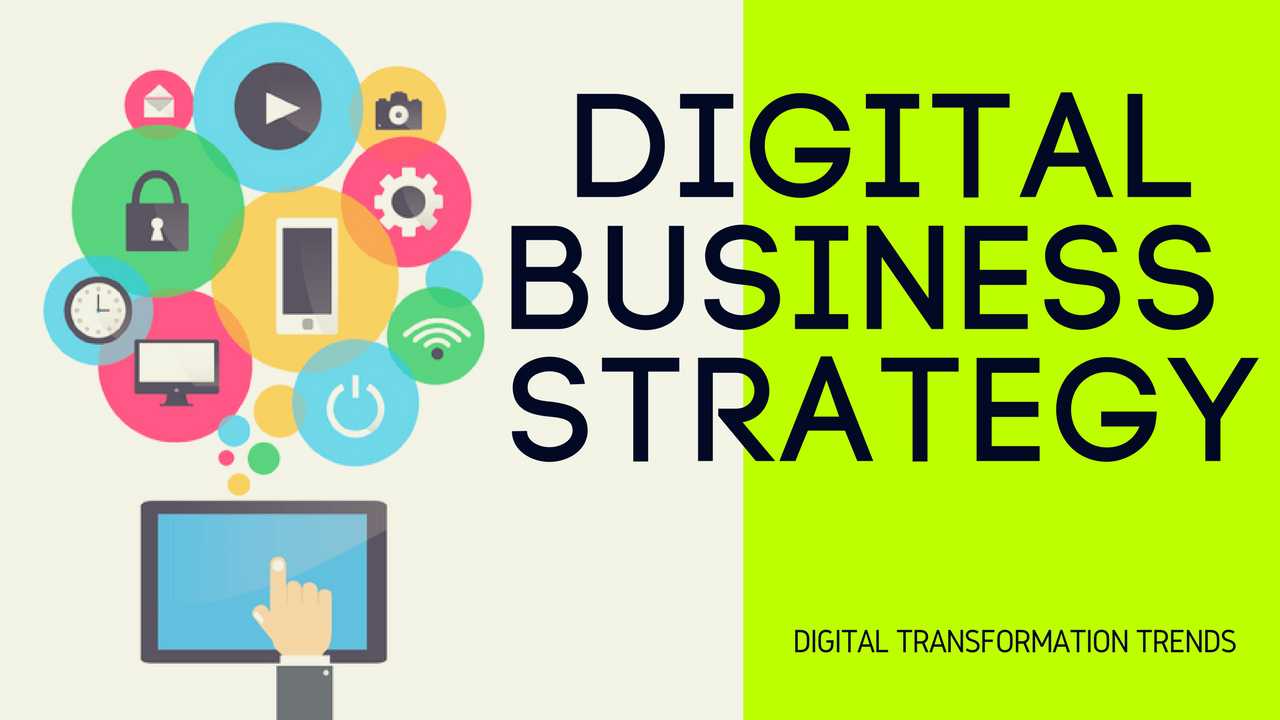Transforming Your Business With A Robust Digital Strategy

Businesses today recognize that a comprehensive digital strategy is not merely an enhancement but an imperative for success in the digital age. Every industry is undergoing digital transformation, spurred by technological advancements and evolving customer expectations. Implementing a solid digital strategy can help businesses harness this change, unlock new growth opportunities, and stay ahead of the ever-evolving market landscape.

Benefits of a Digital Strategy:

A well-defined digital strategy brings numerous benefits, including:
- Enhanced Customer Experience: Digital tools allow businesses to engage with customers on multiple channels, providing personalized experiences and fostering stronger relationships.
- Improved Efficiency and Reduced Costs: Automation and streamline processes can drive significant cost savings and improve operational efficiency.
- Increased Sales and Revenue: Digital marketing channels enable businesses to reach wider audiences, drive traffic, and generate more sales.
- New Market Opportunities: The digital realm opens up new avenues for business expansion, allowing companies to target broader markets or create entirely new products and services.
Developing a Digital Strategy:
Creating a robust digital strategy involves several key steps:
- Define Business Goals: Establish clear and measurable objectives that guide your digital transformation efforts.
- Conduct a Digital Audit: Assess your current digital presence, capabilities, and resources. This evaluation will provide a foundation for developing a strategy.
- Identify Opportunities and Gaps: Analyze your business environment to identify areas for growth and untapped opportunities.
- Develop a Strategy: Outline the specific initiatives, channels, and technologies that will drive your digital transformation.
- Set KPIs and Track Progress: Establish key performance indicators (KPIs) to monitor the success of your digital strategy and make necessary adjustments along the way.
Components of a Digital Strategy:
- Digital Marketing: Utilizing digital channels like social media, search engines, and email to build brand awareness, drive traffic, and acquire customers.
- E-commerce: Establishing online platforms for selling products or services, improving accessibility and convenience for customers.
- Customer Relationship Management (CRM): Using technology to manage customer interactions, track preferences, and provide personalized experiences.
- Data Analytics: Gathering and analyzing data to understand customer trends, improve decision-making, and optimize digital strategies.
In conclusion, a well-conceived and executed digital strategy acts as a catalyst for business transformation. By embracing a digital mindset, integrating emerging technologies, and adopting customer-centric approaches, businesses can unlock unprecedented opportunities for growth, innovation, and success in the digital age.## Transforming Your Business With A Robust Digital Strategy
Executive Summary
In today’s competitive business landscape, a well-defined digital strategy is no longer a luxury but a necessity. A comprehensive digital strategy empowers businesses to engage with customers effectively, optimize operations, and drive growth through digital channels. This article delves into the crucial elements of a robust digital strategy, empowering businesses to harness the transformative potential of the digital realm.
Introduction
The digital landscape has revolutionized the way businesses operate and connect with their target audience. With the proliferation of digital platforms and the crescente adoption of online technologies, it has become imperative for businesses to embrace a holistic digital strategy to stay competitive and achieve sustainable growth. A well-crafted digital strategy provides a roadmap for businesses to navigate the digital landscape effectively, leveraging its vast opportunities for business transformation.
Essential Elements of a Robust Digital Strategy
1. Define Your Digital Objectives
A clear understanding of your business goals and objectives is paramount in developing an effective digital strategy. Determine what you aim to achieve through digital channels, whether it’s increasing brand awareness, generating leads, or driving sales. Well-defined objectives provide a solid foundation for aligning your digital initiatives with your overall business strategy.
- Establish specific, measurable, achievable, relevant, and time-bound (SMART) goals.
- Align digital objectives with overarching business goals.
- Prioritize objectives based on their importance and impact.
- Monitor and track progress towards achieving your digital objectives.
2. Know Your Target Audience
Understanding your target audience is crucial for tailoring your digital strategy to resonate with their needs and preferences. Conduct thorough market research to identify your target audience’s demographics, behaviors, online habits, and pain points. This knowledge empowers you to create targeted content, messaging, and campaigns that effectively engage and convert your desired audience.
- Conduct surveys and focus groups to gather insights about your target audience.
- Analyze website traffic data and social media analytics to understand their online behavior.
- Monitor industry trends and customer feedback to stay abreast of their evolving needs.
- Create buyer personas to represent your ideal customers and guide your digital strategy.
3. Optimize Your Digital Presence
Your website and social media platforms are the cornerstones of your digital presence. Ensure your website is user-friendly, informative, and optimized for search engines. Establish a strong social media presence on platforms where your target audience is active, and create engaging content that resonates with their interests. A well-optimized digital presence enhances your visibility, builds brand awareness, and drives traffic to your website.
- Create a mobile-responsive website that provides an optimal user experience on all devices.
- Implement search engine optimization (SEO) best practices to improve your website’s ranking in search results.
- Establish a consistent brand identity across all digital channels.
- Develop a social media content calendar to plan and schedule engaging posts.
- Monitor website and social media analytics to track engagement and identify areas for improvement.
4. Leverage Digital Marketing Channels
Digital marketing channels offer a powerful means to reach and engage your target audience. Explore a mix of paid advertising, organic social media marketing, content marketing, email marketing, and influencer marketing to promote your products or services. By leveraging the right channels and creating compelling content, you can effectively generate leads, drive conversions, and build lasting customer relationships.
- Use paid advertising platforms like Google Ads and social media advertising to target specific audiences with tailored ads.
- Create valuable content that educates, informs, and entertains your target audience.
- Build an email list and nurture subscribers with targeted email campaigns.
- Collaborate with influencers to amplify your reach and build credibility.
- Track campaign performance and make data-driven decisions to optimize your digital marketing efforts.
5. Embrace Data and Analytics
Data is the lifeblood of digital strategy. Track key metrics across your digital channels to measure the effectiveness of your efforts and identify areas for improvement. Use analytics tools to gather insights about website traffic, social media engagement, and campaign performance. This data-driven approach empowers you to make informed decisions, optimize your strategy, and maximize your return on investment.
- Implement Google Analytics to track website traffic and user behavior.
- Use social media analytics tools to measure engagement and audience growth.
- Analyze campaign performance data to identify what’s working and what’s not.
- Set up key performance indicators (KPIs) to track progress towards your digital objectives.
- Regularly review and analyze data to make data-driven decisions and refine your strategy.
Conclusion
Embracing a robust digital strategy is essential for businesses seeking to thrive in the digital age. By defining clear objectives, understanding your target audience, optimizing your digital presence, leveraging digital marketing channels, and embracing data and analytics, you can transform your business, engage with customers effectively, and drive sustainable growth through the power of digital. Remember, the digital landscape is constantly evolving, so stay agile, adapt to new trends, and continuously refine your strategy to stay ahead of the curve and maximize your success.
Keyword Tags
- Digital Strategy
- Digital Marketing
- Target Audience
- Data Analytics
- Business Transformation







